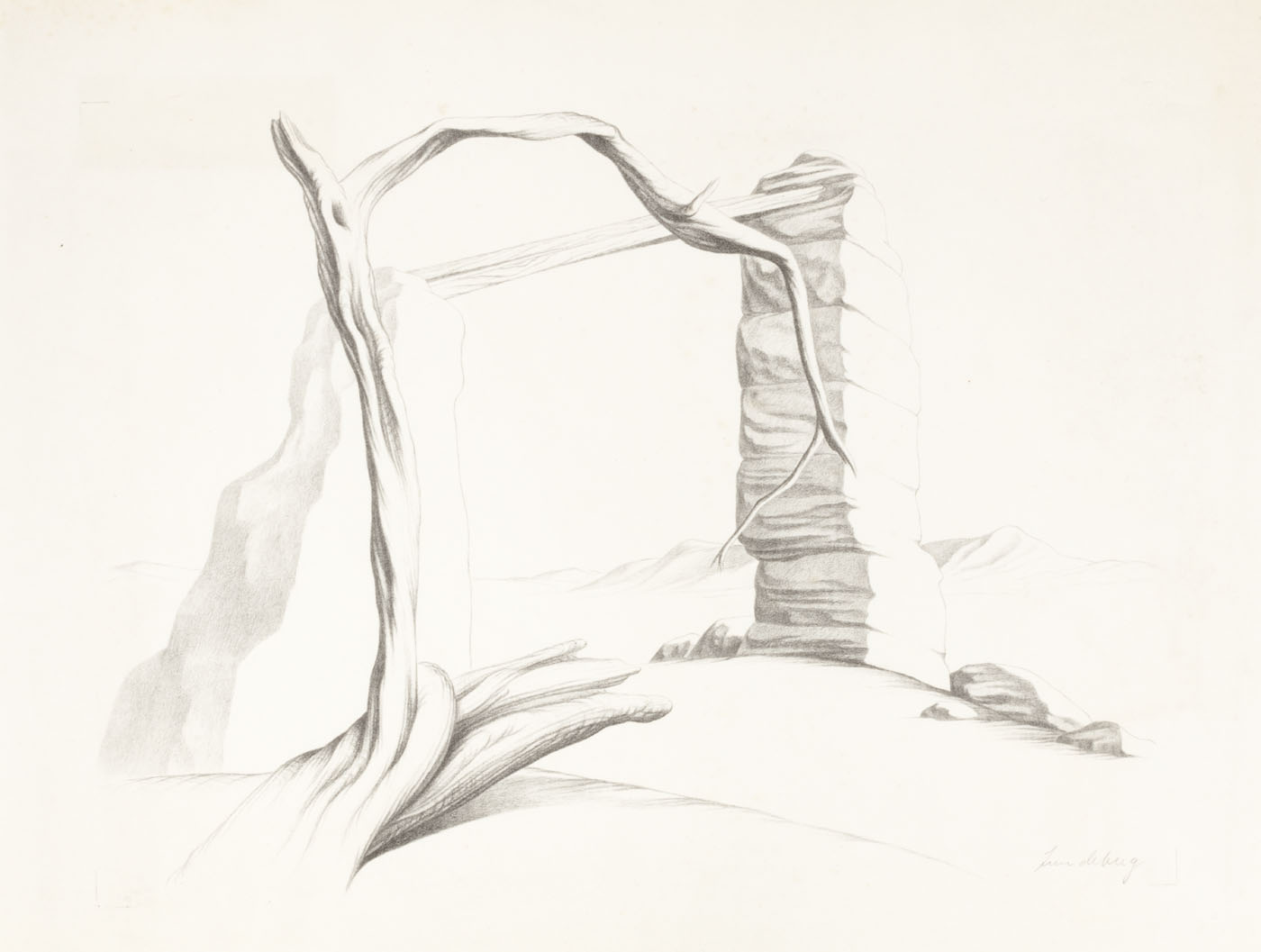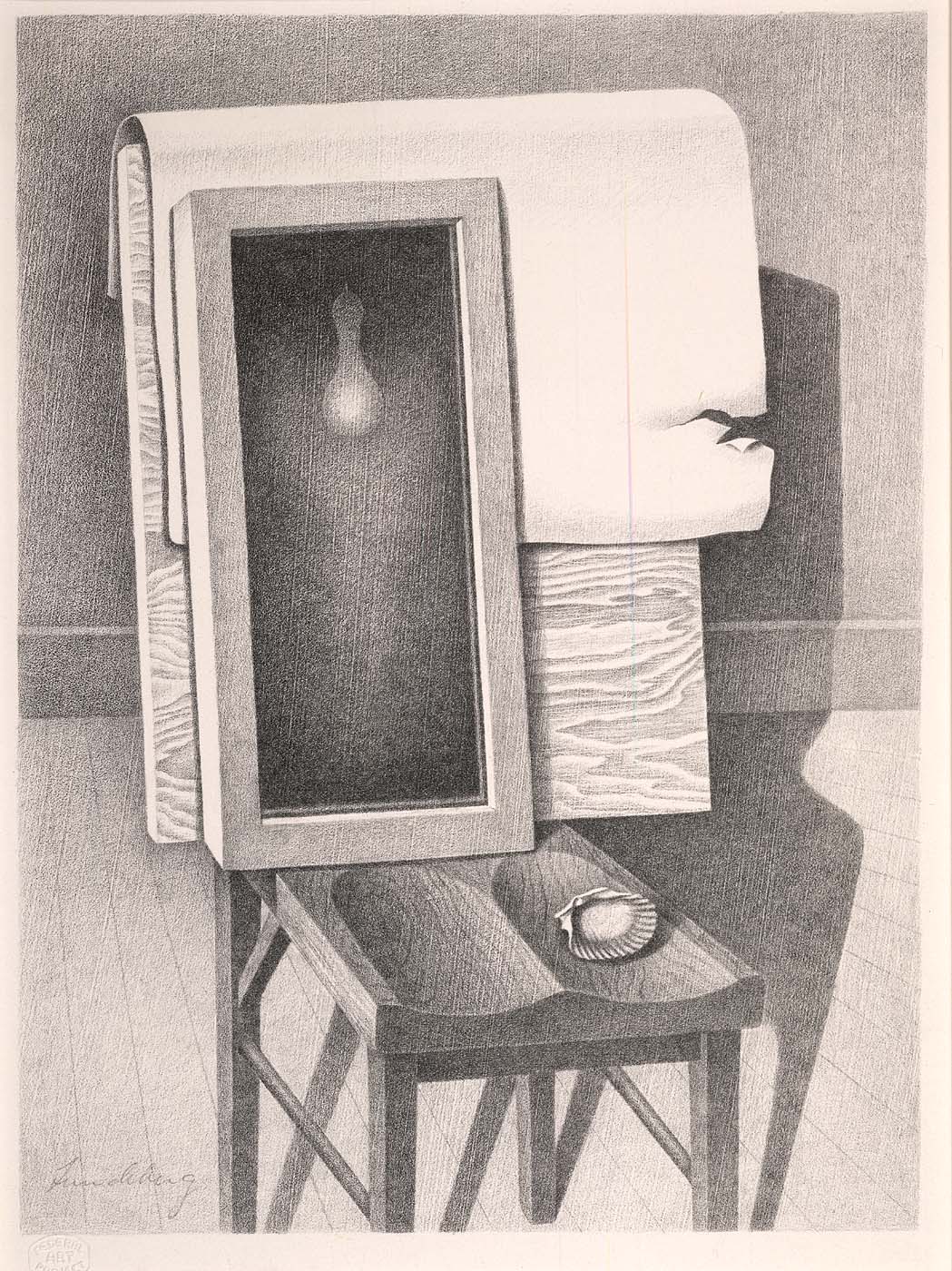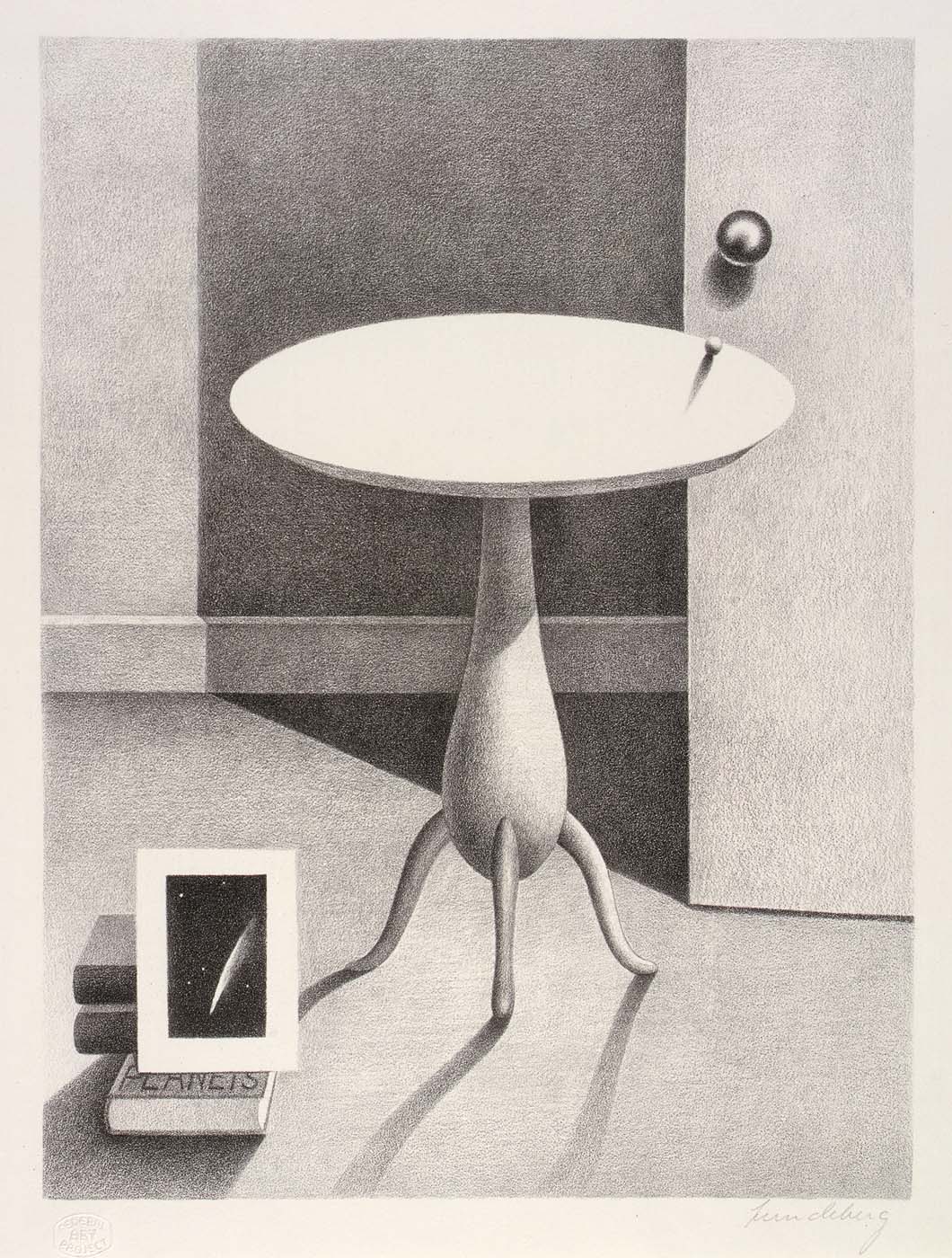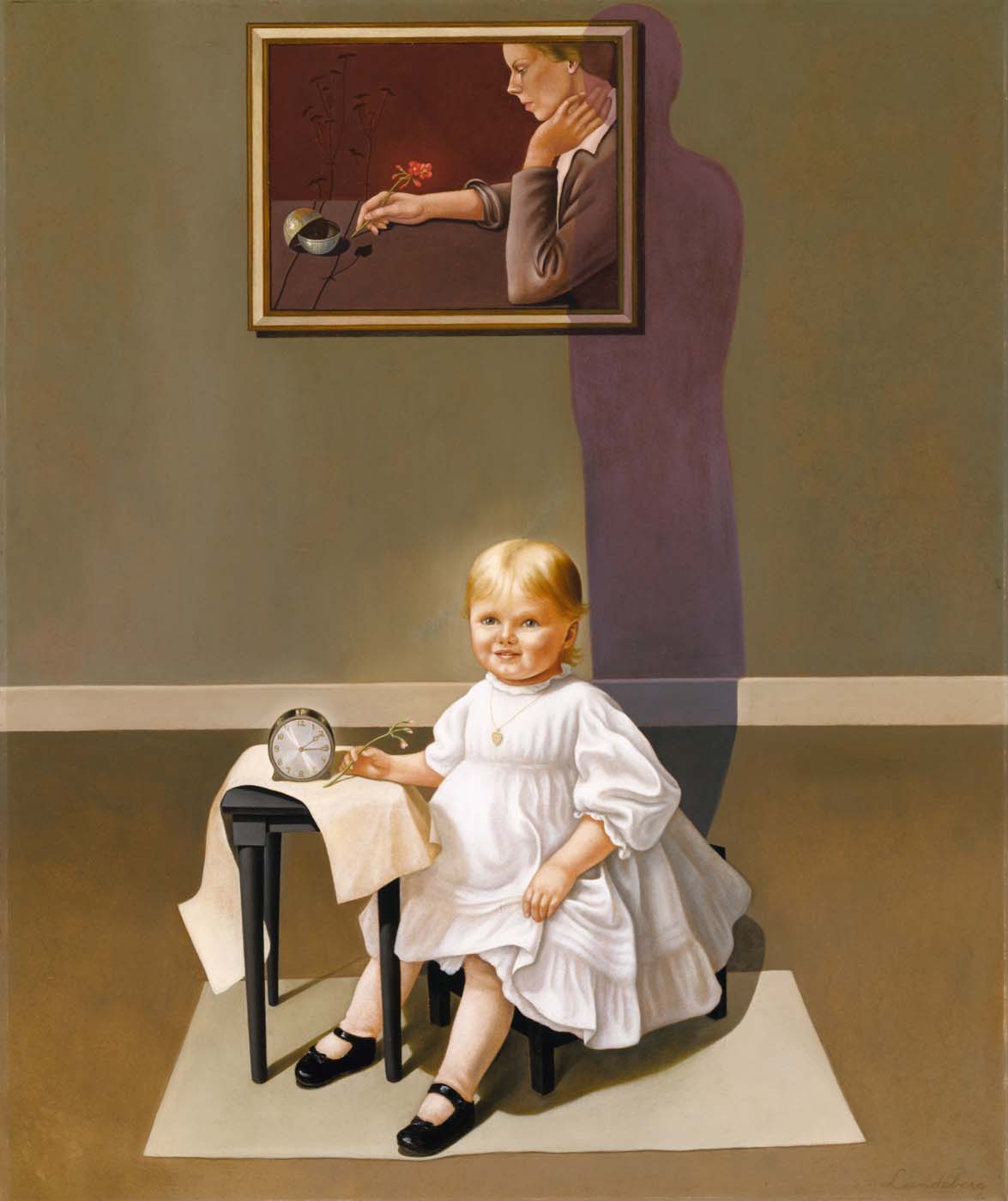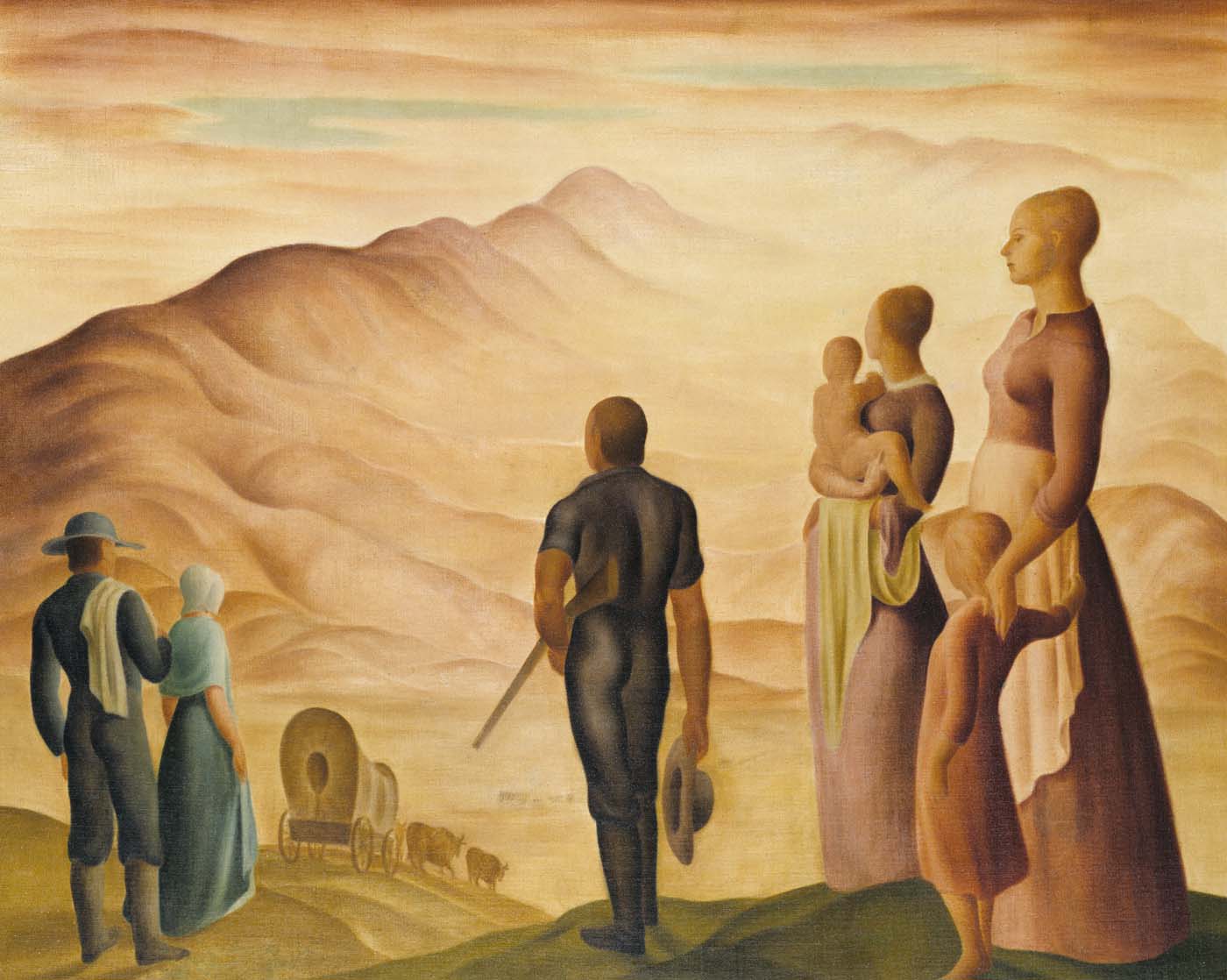Helen Lundeberg
Working in California, Lundeberg and Lorser Feitelson, her teacher and husband, formulated an artistic theory called Post-Surrealism. They wished to depict coherent thought processes and functions of the mind, unlike European Surrealists who concentrated on more bizarre manifestations of dreams and the subconscious.
In Double Portrait of the Artist in Time, [SAAM, 1978.51] Helen Lundeberg actually presents herself four different ways. She copies a pose from a childhood snapshot, reproduces a self portrait, casts her shadow between the child and the picture, and then signs her name to the painting. The child sits with objects symbolizing her youth and inexperience: a clock whose hands indicate her age, a parchment suggesting her unwritten future, and a budding stem representing her undeveloped state. The mature woman, knowing more of the world, holds a blooming flower and ponders an open globe-shaped box. The shadow suggests the physical presence of the living woman who was the child and is the adult. The sginature asserts that Helen Lundeberg created the whole. Ultimately, the painting makes visible the intangible notion that a person exists on many different levels, as many different people at the same time.
In this painting, Lundberg acknowledges the contribution of her childhood to her adult being. She examines herself in the role of the artist, recognizing herself as a creator. Double Portrait thus serves as a metaphor for Helen Lundeberg and for any woman, as girl, adult, and giver of life.
Elizabeth Chew Women Artists (brochure, Washington, DC: National Museum of American Art, Smithsonian Institution)
Objects at Archives of American Art (2)

